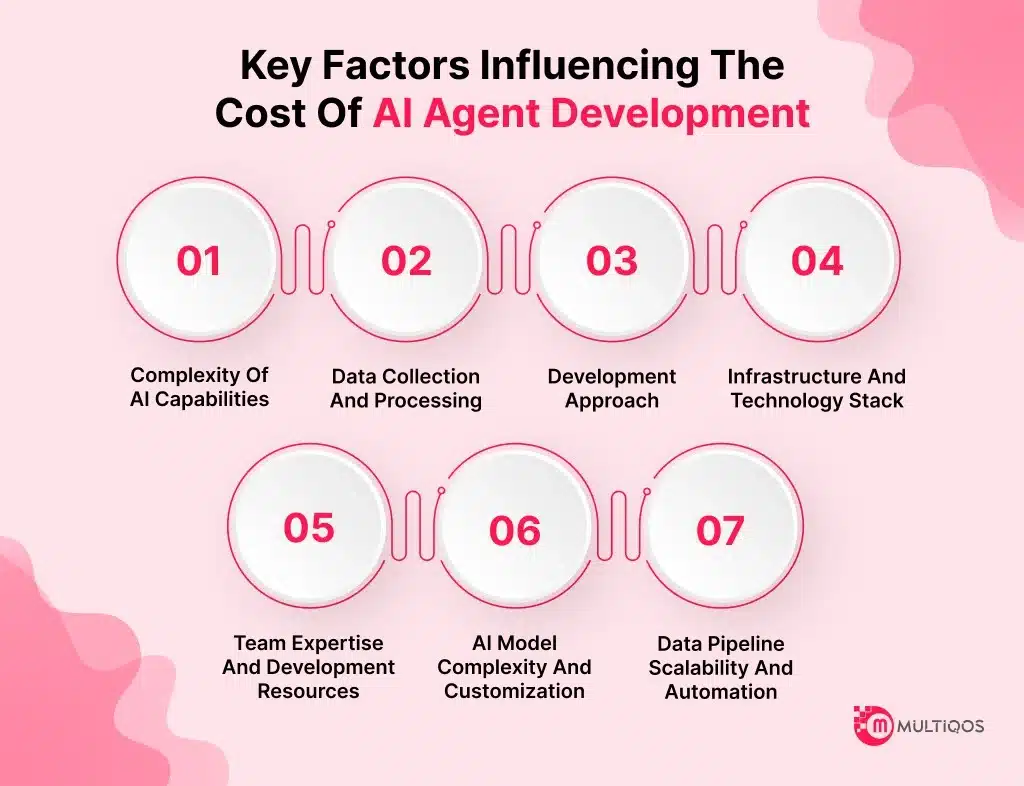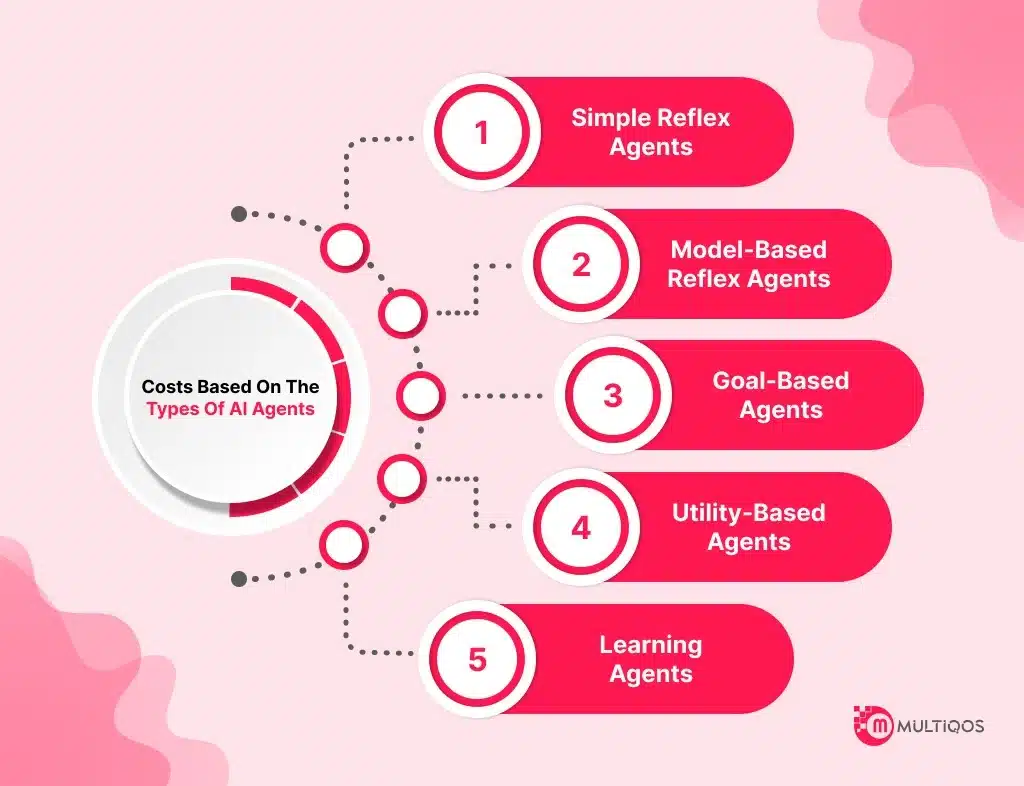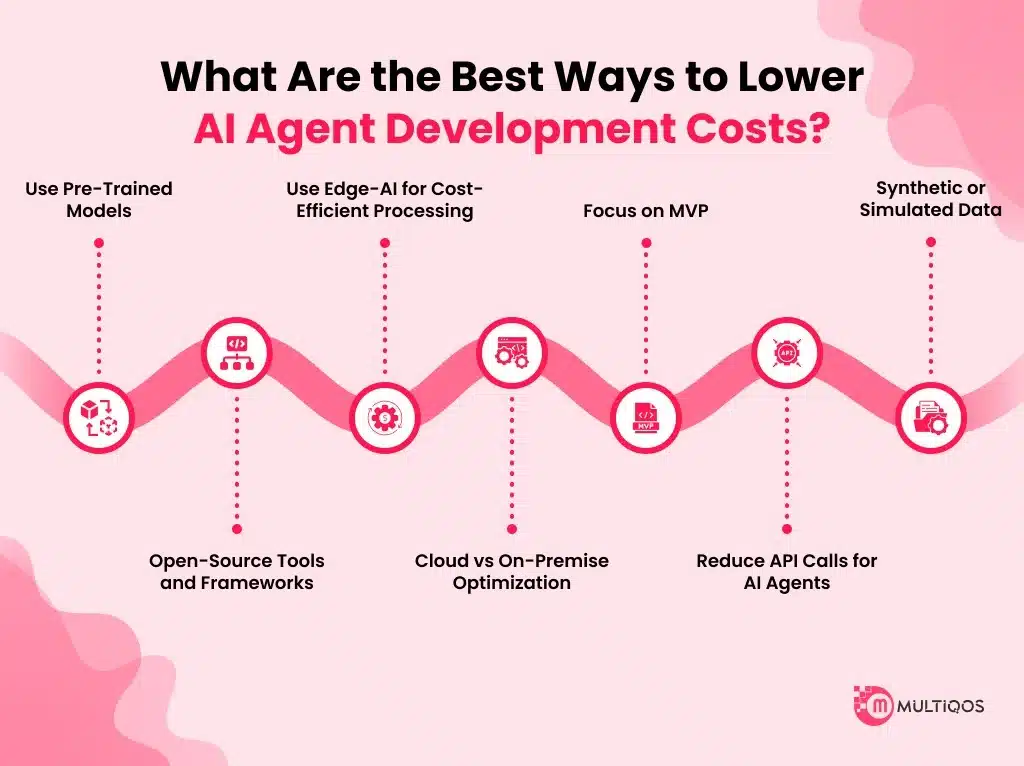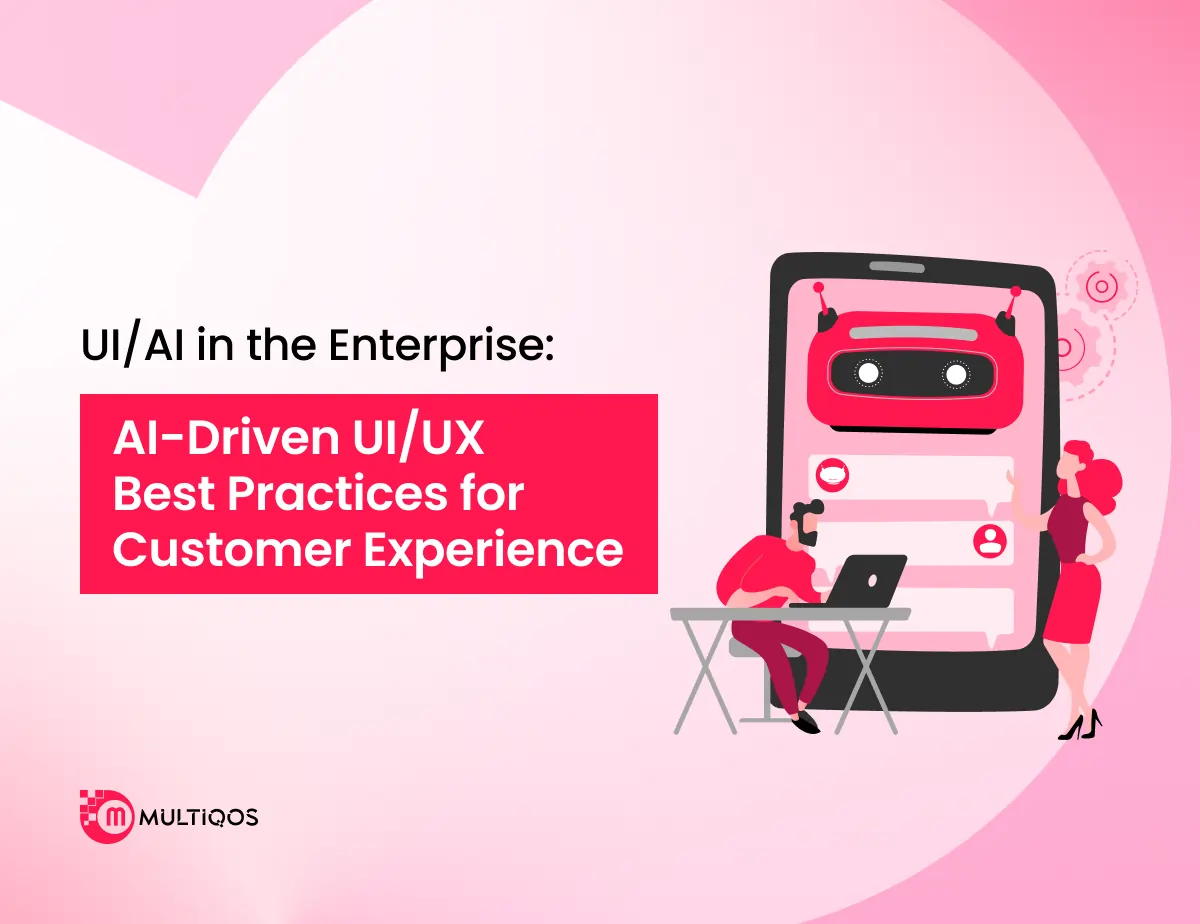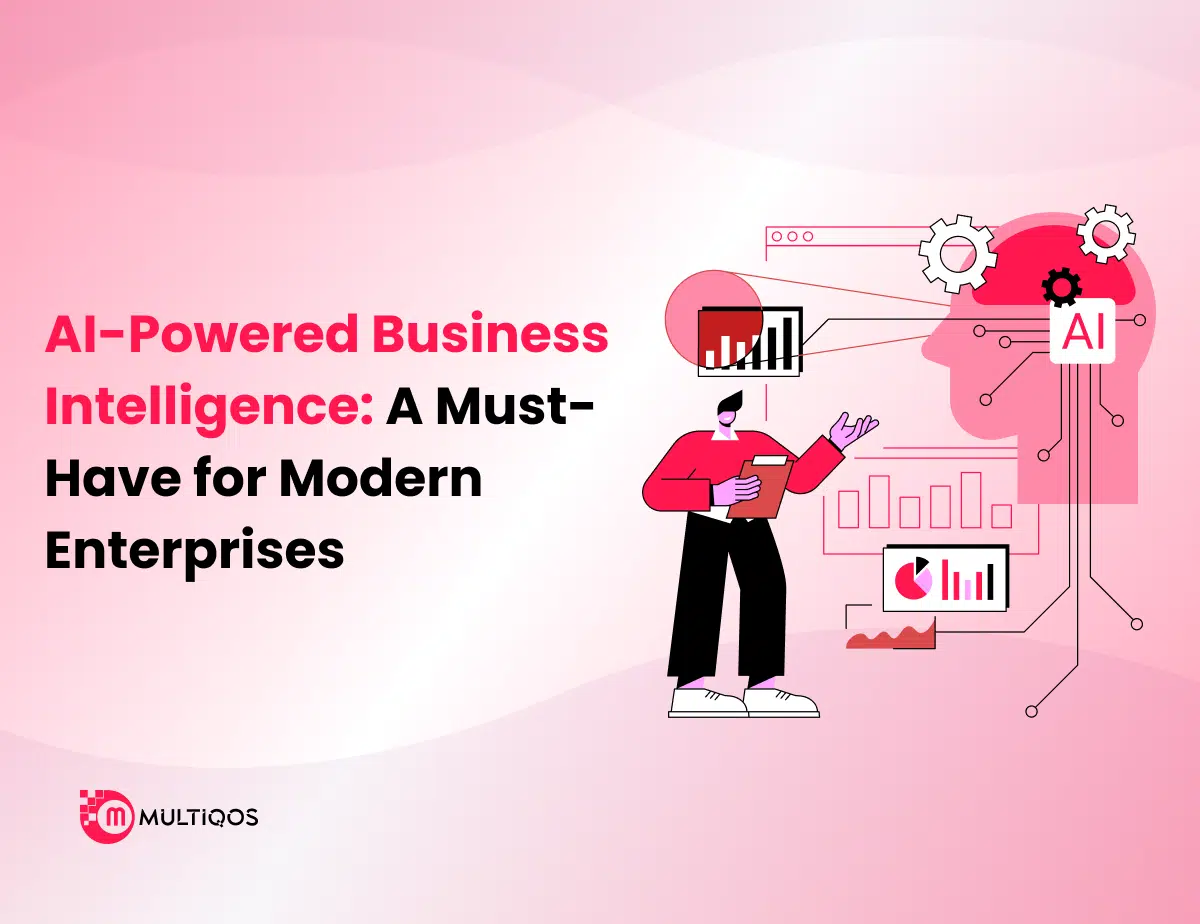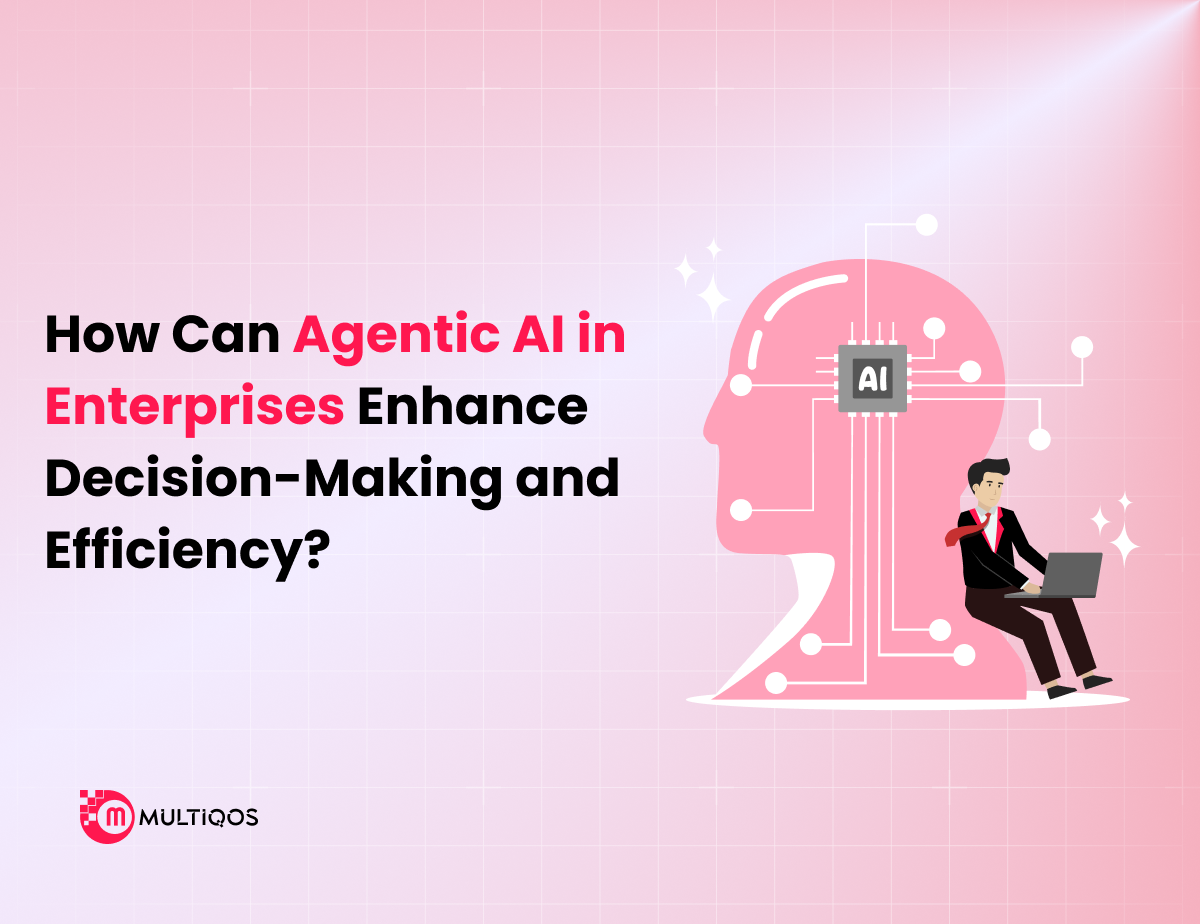AI Agent Development Cost: A Strategic Investment for Businesses
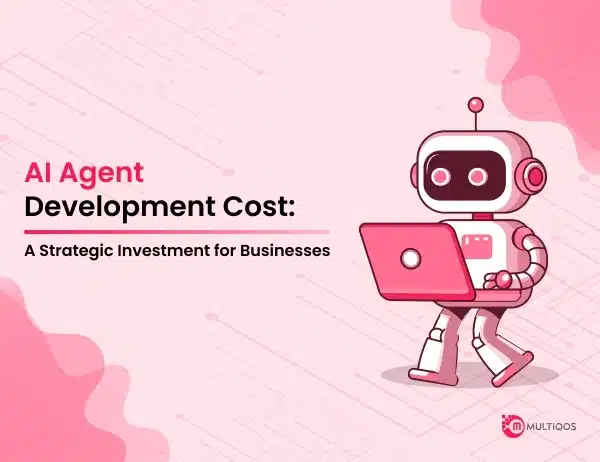
Table of Contents
- Introduction
- Understanding AI Agents: Definition and Benefits
- Key Factors Influencing the Cost of AI Agent Development
- Costs Based on the Types of AI Agents
- Industries Benefiting from AI Agents
- What Are the Best Ways to Lower AI Agent Development Costs?
- What Makes MultiQoS the Right Choice for AI Agent Development?
- Final Thoughts
- FAQs
Summary:
Are you still skeptical about the value of investing in AI agents for your business? With the increasing reliance on technology for efficiency and customer engagement, the AI agent development cost is not just an expense but a gateway to innovation and growth.
This article will demystify the costs associated with AI agent software development and provide insights on how this investment can yield significant benefits, positioning your company for long-term success.
Introduction
Investing in AI agent development is a strategic move for businesses looking to enhance efficiency and drive innovation. While the initial costs associated with developing AI agents can be significant, the long-term benefits often outweigh these expenses. By automating routine tasks, improving customer interactions, and providing data-driven insights, AI agents can lead to substantial cost savings and increased productivity.
As AI technology continues to evolve, organizations that invest early can gain a competitive edge in their respective markets. Ultimately, viewing AI agent development cost as a strategic investment rather than a mere expense enables businesses to harness the transformative potential of artificial intelligence and position themselves for future growth.
Understanding AI Agents: Definition and Benefits
Artificial intelligence agents are autonomous entities or programs that perceive their environment, make decisions, and perform tasks on behalf of a user or another system to achieve specific goals by designing their workflow and utilizing available tools.
They use techniques from artificial intelligence, such as machine learning, to interpret data and adapt their behavior over time. These agents can operate independently or interact with other agents and systems. They are commonly used in areas like virtual assistants, robotics, recommendation engines, and automated workflows.
Here are the key benefits of AI Agents:
- Task Automation
- Enhanced Efficiency and Productivity
- Improved Customer Service Experiences
- Data Analysis and Insights Generation
- Cost Savings and Resource Optimization
- Greater Performance
- Scalability for Business Growth
- Personalization and User Engagement
- Ethical Considerations in AI Usage
Key Factors Influencing the Cost of AI Agent Development
Understanding the elements of AI agent development cost can help you plan effectively and optimize your investment. Here are the key factors you need to consider:
1. Complexity of AI Capabilities
Costs and pricing possibilities may depend greatly on the functionalities and capabilities an AI agent possesses. An increase in more advanced features, including autonomous decision-making, natural language understanding, and multi-step reasoning, further increases costs.
As a result, AI agent software development cost can vary based on the desired functionality and intelligence levels as they require extensive training and more sophisticated models.
2. Data Collection and Processing
High-quality data is the foundation of an effective AI agent. Gathering, cleaning, labeling, and processing data demands both time and specialized tools.
If large or proprietary datasets are needed, the AI agent development cost will increase accordingly due to the added complexity and resource requirements.
3. Development Approach
Whether the project follows a custom-built, low-code, or pre-trained model integration approach affects timelines and resource needs.
A fully custom solution typically involves greater investment. Choosing the right strategy is essential to managing the overall AI agent development cost.
4. Infrastructure and Technology Stack
The underlying infrastructure—cloud services, databases, APIs, and processing frameworks—also contributes to cost.
Using scalable, secure, and high-performance technologies is crucial, but it can raise the AI agent software development cost due to licensing, setup, and maintenance expenses.
5. Team Expertise and Development Resources
The skill level of your development team and the availability of specialized roles such as data scientists, ML engineers, and AI architects directly affect the cost of AI agent development.
More complex projects demand a broader range of expertise, increasing both time and budget needs.
6. AI Model Complexity and Customization
Customizing or building a new AI model tailored to your business requirements can be both a competitive advantage and a cost driver.
The more complex and customized the model, the higher the AI agent software development cost, especially when extensive tuning and testing are required.
7. Data Pipeline Scalability and Automation
A robust data pipeline ensures smooth operations as your AI agent scales.
Building automated, scalable pipelines for continuous data ingestion and model updates adds long-term value but also increases the initial AI agent development cost due to engineering and integration efforts.
Costs Based on the Types of AI Agents
Here’s a breakdown of how costs can differ depending on the nature and capabilities of the AI agent.
1. Simple Reflex Agents
These are the most basic AI agents, operating on a rule-based system that responds to specific inputs with predefined outputs. Due to their limited functionality and minimal data processing needs, development costs are relatively low. They’re ideal for straightforward tasks but lack adaptability or learning capabilities.
- Description: Rule-based systems with fixed responses to predefined inputs.
- Best for: Basic automation tasks, like form validation or simple customer queries.
- Estimated Cost Range: $5,000 – $15,000
- Reasoning: Minimal logic, low data processing, and no learning capabilities make these the most affordable to develop.
2. Model-Based Reflex Agents
These agents maintain an internal model of the world, allowing them to handle more complex environments than simple reflex agents. They require more logic and state management, which increases development time and resources slightly compared to basic reflex agents.
- Description: Maintain an internal model to better respond to environmental changes.
- Best for: Systems needing context awareness or basic state tracking.
- Estimated Cost Range: $15,000 – $30,000
- Reasoning: Slightly higher complexity requires additional programming for state management and logic handling.
3. Goal-Based Agents
Goal-based agents make decisions by considering future outcomes, which requires more advanced reasoning and planning algorithms. Developing these agents involves more complexity, especially in environments where multiple possible actions can lead to a variety of outcomes. This increases both the time and cost of development.
- Description: Choose actions based on desired outcomes using planning algorithms.
- Best for: Decision-making systems like dynamic navigation or workflow automation.
- Estimated Cost Range: $30,000 – $60,000
- Reasoning: More sophisticated planning logic and scenario handling increase development time and resources.
4. Utility-Based Agents
These agents go beyond achieving goals—they evaluate different outcomes and choose the one that maximizes a predefined utility function. This level of decision-making demands more sophisticated algorithms and potentially extensive data modeling, which makes them more expensive to develop.
- Description: Evaluate and choose actions based on a utility function to optimize outcomes.
- Best for: Systems that require nuanced trade-offs, like financial planning tools or smart schedulers.
- Estimated Cost Range: $60,000 – $100,000
- Reasoning: High-level logic, utility modeling, and simulation testing add to the complexity and cost.
5. Learning Agents
Learning agents are the most advanced type, capable of improving performance over time-based on data and experience. The development includes machine learning model integration, data pipelines, and often continuous updates. This makes them the most resource-intensive, with the highest ongoing costs due to training, evaluation, and optimization.
- Description: Use machine learning to adapt and improve over time through data.
- Best for: Applications in recommendation engines, predictive analytics, or adaptive assistants.
- Estimated Cost Range: $100,000 – $250,000+
- Reasoning: These are the most advanced, involving data pipelines, ML model training, infrastructure, and ongoing optimization—significantly impacting the overall AI Agent Development cost.
Industries Benefiting from AI Agents
Here are the industries that are seeing significant benefits from the use of AI agents, leveraging them to streamline operations, enhance customer experiences, and drive innovation across various functions.
1. Healthcare
AI agents are revolutionizing healthcare by assisting with diagnostics, patient engagement, and administrative automation. Virtual health assistants help monitor patients, answer health-related queries, and streamline appointment scheduling. AI-powered agents can also support doctors in analyzing medical images or predicting patient outcomes, leading to faster and more accurate treatment decisions.
2. Finance & Banking
In finance, AI agents are used for fraud detection, personalized financial advice, customer service automation, and risk assessment. Chatbots handle customer inquiries efficiently, while intelligent agents monitor transactions in real-time to flag suspicious activity. They also support algorithmic trading by analyzing vast datasets to make data-driven investment decisions.
3. Retail and E-commerce
AI agents enhance customer experience through personalized product recommendations, intelligent chat support, and automated order tracking. They analyze customer behavior to optimize marketing strategies and manage inventory more effectively. AI-driven virtual shopping assistants are becoming increasingly popular, improving conversion rates and customer satisfaction.
4. Education
AI agents in education provide personalized learning paths, automate grading, and offer real-time tutoring support. They can adapt to students’ learning styles, identify knowledge gaps, and provide targeted feedback. Institutions also use AI agents to streamline administrative processes such as enrollment, scheduling, and student support.
5. Entertainment & Media
In this industry, AI agents drive content recommendations, automate editing, and support interactive storytelling in games and streaming platforms. Virtual influencers, AI voiceovers, and personalized media experiences are reshaping how audiences interact with content. AI agents also assist with copyright enforcement and content moderation on social platforms.
What Are the Best Ways to Lower AI Agent Development Costs?
Developing an AI agent doesn’t have to break the bank. With the right strategies and technologies, businesses can significantly reduce costs while maintaining high performance. Here are some of the most effective ways to lower AI agent development costs:
1. Use Pre-Trained Models
Instead of building models from scratch, leverage pre-trained models that have already been trained on large datasets. These models can be fine-tuned for specific use cases, saving time, compute resources, and data labeling costs.
2. Open-Source Tools and Frameworks
Take advantage of the robust ecosystem of open-source libraries, AI agent frameworks, and tools available for AI development. From TensorFlow and PyTorch to Hugging Face Transformers, open-source solutions can cut down licensing costs and speed up development.
3. Use Edge-AI for Cost-Efficient Processing
Deploying AI agents on edge devices (like mobile or IoT hardware) can reduce reliance on cloud-based compute resources, lowering latency and operational costs—especially in use cases requiring real-time decision-making.
4. Cloud vs On-Premise Optimization
Choosing the right deployment strategy can have a big impact on costs. Evaluate the trade-offs between cloud and on-premise environments. The cloud offers flexibility and scalability, while on-premise might reduce long-term expenses for consistent, high-volume workloads.
5. Focus on MVP
Start small. Build a lean version of your AI agent with core features, validate it, and then scale up based on feedback and performance. This avoids over-engineering and ensures you’re only investing in what truly adds value.
6. Reduce API Calls for AI Agents
Frequent external API calls—especially to premium AI services—can rack up significant costs. Optimize agent workflows to batch requests, cache responses, or switch to self-hosted models when feasible.
7. Use Synthetic or Simulated Data
Generating synthetic data can be a cost-effective way to train models when real-world data is scarce, expensive, or difficult to label. Simulation environments also allow you to create controlled, scalable datasets to improve agent performance.
What Makes MultiQoS the Right Choice for AI Agent Development?
MultiQoS stands out as a trusted partner in building intelligent AI-driven solutions tailored to modern business needs. With a team of seasoned experts and a forward-thinking approach, we combine technical excellence with deep industry insight to create AI agents that deliver real impact.
As a leading AI agent development company, MultiQoS is committed to helping businesses maximize value while keeping budgets in check. Their strategic approach emphasizes smart resource allocation, the use of open-source tools, and agile development practices to reduce AI agent development costs without compromising performance.
Whether you’re building a customer support bot or a complex decision-making engine, MultiQoS ensures your AI journey is both cost-effective and innovation-driven.
Final Thoughts
To sum up, while the initial costs of developing AI agents may seem daunting, the potential returns and competitive advantages make it a worthy investment for any forward-thinking business. The ability to automate routine tasks, improve customer interactions, and gather valuable insights can lead to increased efficiency and profitability.
As more companies recognize AI’s transformative power, those who act now will be positioned to lead in their respective industries. Investing in AI is not just about keeping pace; it’s about setting the pace for innovation and growth. Hire AI agent developers and take the first step toward integrating them into your business strategy for a brighter tomorrow.
Frequently Asked Questions
The cost depends on several variables, including the complexity of the agent, the type of AI model used (rule-based vs. machine learning), required integrations, data needs, deployment infrastructure (cloud vs. on-premise), and ongoing maintenance. Customization and scalability also play a big role in shaping the final cost.
Yes. Small businesses can start with simpler AI agents—like rule-based or goal-oriented agents—that require less investment. Using pre-trained models, and open-source tools, and focusing on MVP can help keep costs manageable while still delivering value.
Return on Investment (ROI) varies by use case but often includes reduced labor costs, faster response times, improved customer satisfaction, and more efficient decision-making. Over time, AI agents can pay for themselves by automating repetitive tasks and improving operational performance.
Timelines range from a few weeks for simple reflex agents to several months for learning or utility-based agents. Factors like data availability, model training time, and integration requirements affect the development cycle.
Get In Touch

